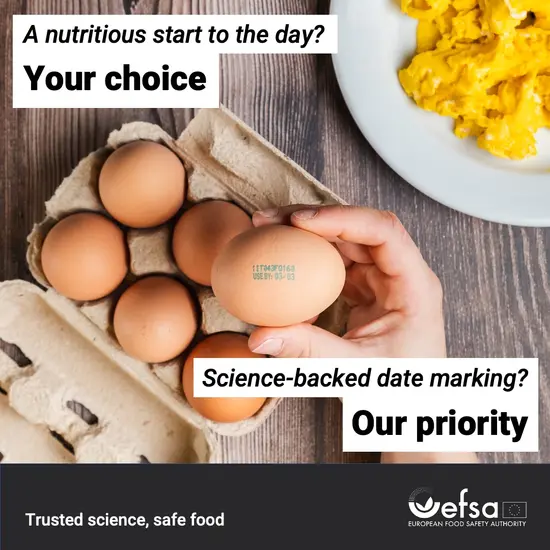Food date labelling
What do ‘use by’ and ‘best before’ mean?
Food labels help you make safe and informed choices while reducing food waste. Understanding the difference between use by and best before dates is essential.
The European Commission estimates that up to 10% of the 88 million tonnes of food waste generated annually in the EU is linked to food date labelling on food products.
What is a ‘use by’ date?
A use by date is all about food safety. Foods with this label, such as fresh meat, fish, ready-to-eat salads, and dairy products, should not be eaten after that specific date, even if they look or smell fine. Harmful bacteria that you can’t see or smell might make you ill.
To use food safely before the use by date, follow storage instructions, such as keeping it below 5°C. You can also cook food before the date, which gives you some extra time – either eat it within 48 hours if stored in the fridge or freeze it for later. Don’t forget to label frozen items with the date they were frozen to avoid confusion.
What is a ‘best before’ date?
A best before date focuses on food quality. After this date, food is still safe to eat if stored correctly but may lose some of its taste, texture, or freshness. This label is often found on longer-lasting foods like pasta, rice, tinned goods, frozen foods, and snacks.
For these foods, you can use your senses – look, smell, or taste – to check if they’re still good to eat. However, this does not apply to foods with a use by date, as harmful bacteria could be present even if the food seems fine.
Food date labelling is based on science. Providing clear and accurate information on packaging, along with a better understanding of date marking, helps ensure food safety while also reducing food waste across the EU.
Michaela Hempen, an EFSA Food microbiologist.
Why does understanding date labels matter?
Misunderstanding date labels contributes to food waste. In the EU, up to 10% of food waste comes from confusion about use by and best before dates. By knowing the difference, you can plan meals more effectively, store food correctly, and make better decisions about what to keep and what to throw away.
What is being done to improve date marking?
To make labels clearer and help reduce food waste, food safety scientists and producers work together to ensure dates are accurate. EFSA has developed a tool to guide producers on when to apply a use by or best before date, making it easier for consumers to make informed choices.
By understanding these labels, you can enjoy food safely, save money, and help protect the planet by cutting down on food waste.




































